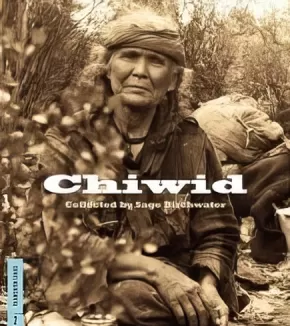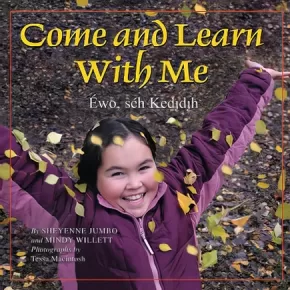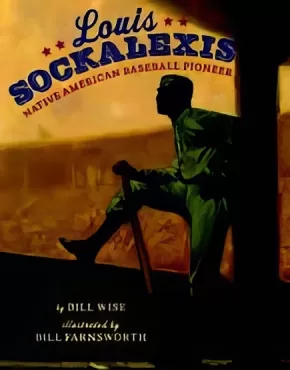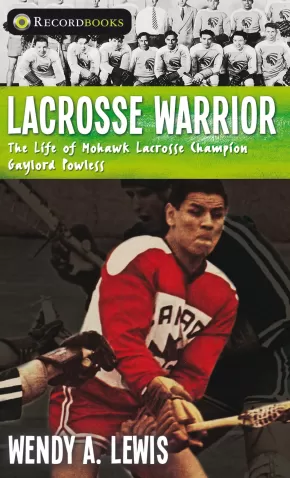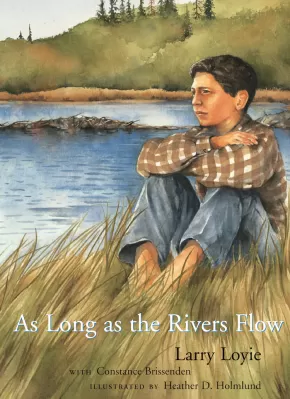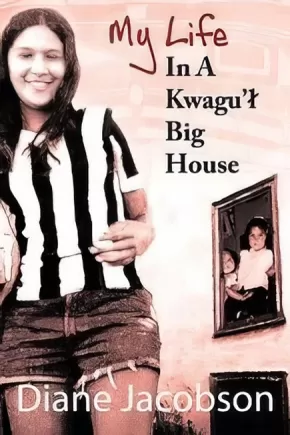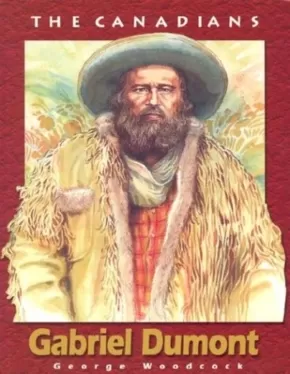Biographies
Synopsis:
Diane “Honey” Jacobson’s latest book is an important comment about First Nations efforts to save the salmon and her personal youthful journey to find meaning and a sense of place in life. Like the style in her first book My Life in a Kwagu’l Big House, Diane’s style in My Life with the Salmon is full of action, amazing adventures and fascinating connections between land, water and people. In My Life with the Salmon, we follow “Honey” through sometimes hilarious and sometimes difficult periods but we always learn a life lesson.
Awards
- 2012 Winner of the Independent Publisher Book Awards
Additional Information
176 pages | 5.50" x 8.47"
Synopsis:
James Pokiak is proud to be Inuvialuit, which means "real people."
The Inuvialuit are the most westerly Canadian Inuit. James lives in the hamlet of Tuktoyuktuk, NWT, which is above the Arctic Circle on the shore of the Arctic Ocean. The community is often just called Tuk to save time. Even though he lives in town now, James grew up on the land, learning the traditional values and survival skills of his people.
In this book, the fifth in the The Land is Our Storybook series, James and his daughter, Rebecca, go on a trip to harvest beluga whale. Harvesting and preparing beluga meat together as a family is an integral part of what it means to be Inuvialuit. Join James and Rebecca and learn about how the beluga whale is interlinked with Inuvialuit culture and history.
Educator & Series Information
Recommended Ages: 8-12
This is the fifth book in the The Land Is Our Storybook Series, a first-ever series of books for children about the diverse lands and cultures of Canada's Northwest Territories.
Additional Information
32 pages | 8.33" x 8.25"
Synopsis:
Chiwid was a Tsilhqot'in woman, said to have shamanistic powers, who spent most of her adult life "living out" in the hills and forests around Williams Lake, BC. Chiwid is the story of this remarkable woman told in the vibrant voices of Chilcotin oldtimers, both native and non-native.
Reviews
"Chiwid was a Chilcotin woman who lived outside, self-sufficiently for most of her life and moving camps with the seasons. Chiwid is a collection of oral histories about the woman, her family and what life was like in the Chilcotin area of British Columbia in the early to mid-1900s." - The Association of Book Publishers of BC. BC Books for BC Schools. 2009-2010.
Additional Information
128 pages | 8.00" x 9.00"
Authenticity Note: This book's author is not Indigenous; however, the book has the Authentic Indigenous Text label because it contains stories collected by the author from Indigenous and non-Indigenous peoples. It is up to readers to determine if this book will work as an authentic text for their purposes.
Synopsis:
Nine-year-old Sheyenne lives in Sambaa K'e, Northwest Territories-that's Trout Lake in English. Come learn with her as she takes you on a journey to her community in the fall, the season of moose.
This is the fourth book in the popular series "The Land Is Our Storybook" and features the Dehcho region of the Dene. "The Land Is Our Storybook" is a series of books about the lands and cultures of Canada's Northwest Territories. In the books, storytellers, elders, and cultural leaders from the ten regions in the Territories share real stories of everyday life in the North today.
Reviews
"The non-fiction book is colorful with rich, brilliant photographs and maps. Well-organized . . . Intriguing facts are contained within this book, making it a valuable resource for in classrooms, libraries, and homes. Come and Learn With Me can be used with both Aboriginal and non-Aboriginal readers to learn about Trout Lake's daily life during the fall moose season. This book will help preserve and keep the Dene Yatie (used to be known as South Slavey) group's language and culture alive. It is an innovative teaching tool and a 'must have' to read." — CM magazine
"Readers would be hard pressed to find a book of better quality whether it be for information, text, illustrations, layout, photography, or overall presentation. The text is well written and informative. The text is enhanced by maps, glossary, sidebars, graphics and stunning photography." — Resource Links
Educator & Series Information
This book is part of the "The Land Is Our Storybook" series, which considers the diverse lands and cultures of Canada's Northwest Territories. Told in a uniquely diverse range of northern voices, with a child-centred approach, books in the series highlight each official Aboriginal language group in the NWT, revealing a richly textured picture of life in the North -- on the trapline, around the campfire, in communities, at school, and within the outdoor school that is the land itself. The series celebrates the seasons, ages, genders, traditional activities, and communities of the NWT.
The stories are illustrated by the striking images of acclaimed northern photographer, Tessa Macintosh and depict the similarities in lifestyle between children of the North and South, as well as the marked cultural differences, and highlight the special relationship these First Nations people have with the land and how they are adapting to rapid change while remaining connected to the land. Images of the landscape and animals within it, of trapping, hunting, fishing, and bannock baking sit alongside pictures of children at school, swimming at recreation centres, and reading in libraries. Here is modern northern culture painted beautifully: a complex mix of the new and the old.
These wonderful books, written with a variety of provincial and territorial curricula in mind, are specially designed for the classroom and include special features such as glossaries relating details on animals biology and cultural definitions, regional and language maps. The text of the stories also have sidebars such as Our Stories, which contain the stories of the people and language group featured, and Our Words, which highlight words in the featured language that are important to the story.
This resource is also available in French: Viens avec moi: Nous apprendrons ensemble!
Additional Information
32 pages | 8.00" x 8.00" | colour photographs and illustrations, map
Synopsis:
On a Maine summer day in 1884, twelve-year-old Penobscot Indian Louis Sockalexis first fell in love with baseball. As he grew up, Louis honed his skills and dreamed of one day joining a major league team.
Louis encountered opposition at every turn—from the jeers of teammates and the taunts of spectators who thought he had no place in a "white man's sport" to the disapproval of his father, who wanted Louis to focus on tribal life. Louis finally made it to the major league Cleveland Spiders, but racism followed him, until one momentous day in June 1897 at New York's Polo Grounds. Facing off against the most feared pitcher in baseball, Louis proved he belonged in the sport.
Here is the inspiring story of a boy who dared to make his dream a reality. With determination, courage, and quiet dignity, Louis Sockalexis smashed racial barriers and home runs, leaving an indelible mark on America's favorite sport.
Educator Information
Guided Reading: Q
Lexile: AD920L
Interest Level: Grades 1 - 5
Reading Level: Grades 2 - 4
Additional Information
32 pages | 10.50" x 8.25"
Synopsis:
Gaylord Powless was playing lacrosse by the age of three. He descended from generations of Mohawk lacrosse players and possessed great skill, but his native ancestry made him the target of brutal checking, and slashing. This is a compelling story of how this champion learned to deal with emotions.
Ideal for reluctant readers.
Educator & Series Information
Recommended Ages: 12-18.
Fry Reading Level: 4.5
This book is part of the Recordbooks Series. Recordbooks help reluctant readers understand social issues through the lens of a true story of a sports hero.
Series features:
- Ideal for reluctant readers
- Hi-lo
- Short chapters, easy-to-read format
- Great for ESL and adult students
- Writing with a flair for making history feel like novels
- Accompanied by historical photos and sports trivia
- Ideal for ages 12+
Additional Information
120 pages | 4.25" x 7.00"
Synopsis:
When Lawrence's father goes overseas with the Canadian Army during the Second World War, the young Cree boy struggles to grow up while wrestling with the meaning of war. With Papa gone, Mama raises the children alone. Traditional foods like wild meat and fish are scarce and many other foods are rationed. Angry about the changes and confused about the future, Lawrence misses his father and his teachings about their natural way of life. When army runaways threaten the family, Lawrence's courage and knowledge of traditional skills are called upon to keep them safe. With guidance from his grandfather and encouragement from his grandmother, Lawrence faces his challenges, becoming wiser and stronger, and earning the respect of his elders.
Educator & Series Information
Recommended for grades 4 to 9.
This book is part of The Lawrence Series.
Additional Information
44 pages | 7.75" x 10.54"
Synopsis:
In the 1800s, the education of First Nations children was taken on by various churches, in government-sponsored residential schools. Children were forcibly taken from their families in order to erase their traditional languages and cultures.
As Long as the Rivers Flow is the story of Larry Loyie's last summer before entering residential school. It is a time of learning and adventure. He cares for an abandoned baby owl and watches his grandmother make winter moccasins. He helps the family prepare for a hunting and gathering trip.
Sequel: Goodbye Buffalo Bay
Awards
- In 2006, As Long As the Rivers Flow was the award recipient for First Nation Communities Read.
- Winner of the Norma Fleck Award for Canadian Children's Non-Fiction
Educator Information
Recommended for ages 7 to 11.
Curriculum Connections: Indigenous Studies, Social Studies, Science and Nature.
This resource is also available in French: Tant que couleront le rivieres.
Additional Information
48 pages | 7.25" x 10.25"
Synopsis:
"'Wheee!!' Honey's cousin Phillip Boy was roaring with delight as they whizzed down the stairs on their homemade iron surfboard. Honey could only close her eyes when she saw Grandma Axu at the bottom of the staircase..."
Honey Jacobson considered herself lucky to live in the last semi-traditional Big House of the Kwagu'l people: a four-story home filled with a loving, extended family of cousins, uncles, aunts and the heads of the household, Grandpa Moses and Granny Axu. While new smaller houses were spreading throughout her community, Honey really knew only her relatives inside that Big House.
Capturing the fancy of Honey's community and family, the 1960s saw a Kwagu'l family inevitably changed by Western culture's spell. This is Honey's story.
Additional Information
191 pages | 6.00" x 9.00"
Synopsis:
Born in St. Boniface in 1837 of French and Indian parentage, Gabriel Dumont's childhood was spent in the Saskatchewan country, where he grew accustomed to the semi-nomadic existence of the Métis. These were the proud days of the Métis nation, when its people roamed freely throughout the Prairies. The most stable social institution was the annual buffalo hunt with its rules. When Gabriel Dumont became head of the Great Saskatchewan Hunt in 1862 the end of the nomadic lifestyle was already in sight.
As the buffalo herds dwindled, the Métis began to form more permanent settlements, but were alarmed when their pleas for recognition of their land rights were ignored by Sir John A Macdonald's government. Dumont appealed to Louis Riel, leader of the Red River Rebellion.
Riel spoke up for the Saskatchewan Métis, but their petitions were ignored. In 1885, the Métis took up arms against the government forces. Dumont spurred the outnumbered rebels to several victories. After the Métis defeat, Dumont fled to the United States where he spent time with Buffalo Bill's Wild West Show until an amnesty was declared and he was able to return to his home.
Educator & Series Information
This book is part of The Canadians Series.
Recommended Ages: 10-13
Additional Information
64 pages | 6.50" x 8.50"





